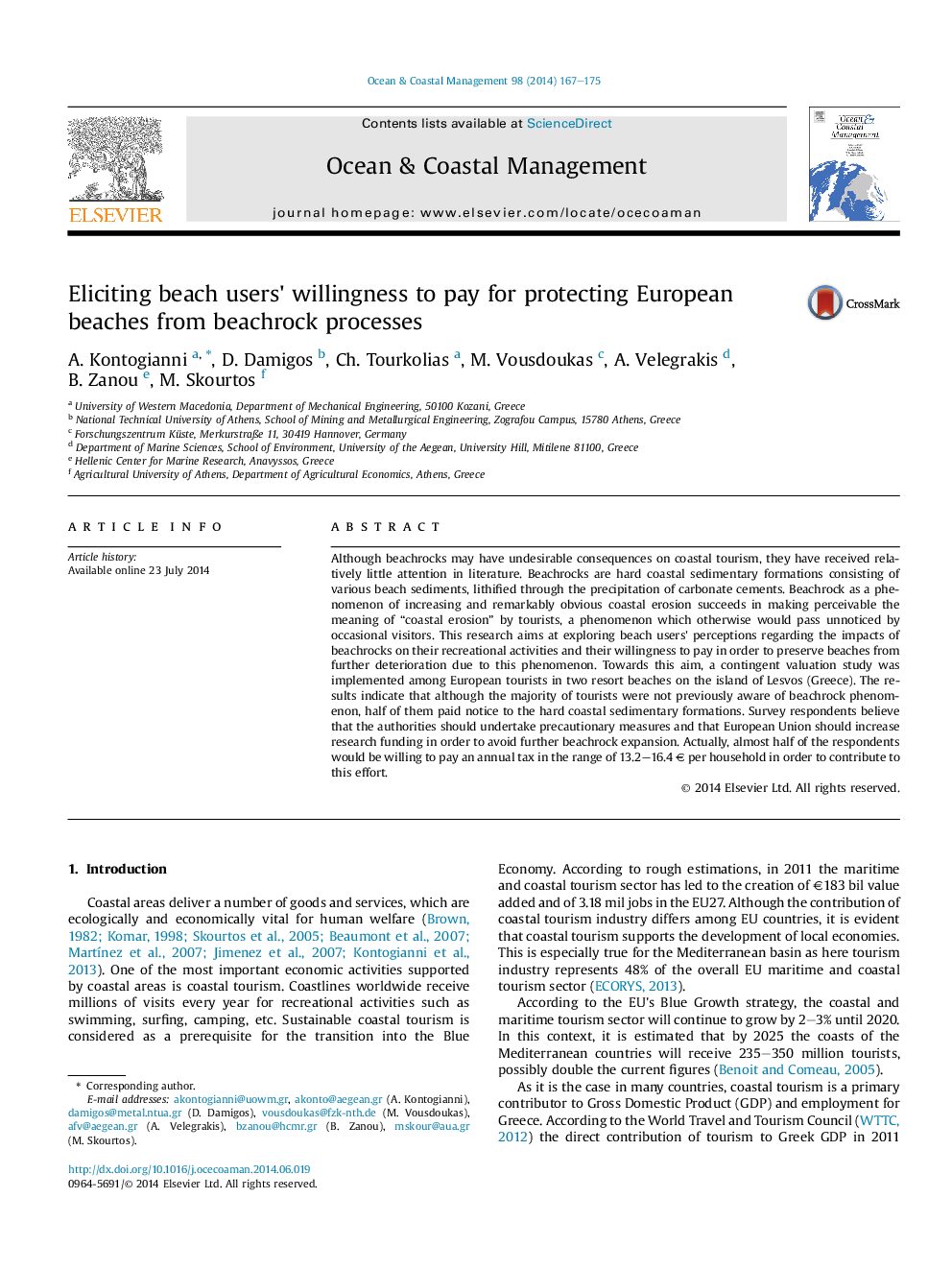| Article ID | Journal | Published Year | Pages | File Type |
|---|---|---|---|---|
| 1723672 | Ocean & Coastal Management | 2014 | 9 Pages |
•We model tourists' perceptions on beachrock formation and coastal erosion.•We estimate willingness to pay to protect two Greek beaches.•WTP to mitigate coastal erosion ranges between 13.2 and 16.4 per household annually.•Results indicate that there are good economic reasons for strengthening research efforts related to beachrock phenomenon.
Although beachrocks may have undesirable consequences on coastal tourism, they have received relatively little attention in literature. Beachrocks are hard coastal sedimentary formations consisting of various beach sediments, lithified through the precipitation of carbonate cements. Beachrock as a phenomenon of increasing and remarkably obvious coastal erosion succeeds in making perceivable the meaning of “coastal erosion” by tourists, a phenomenon which otherwise would pass unnoticed by occasional visitors. This research aims at exploring beach users' perceptions regarding the impacts of beachrocks on their recreational activities and their willingness to pay in order to preserve beaches from further deterioration due to this phenomenon. Towards this aim, a contingent valuation study was implemented among European tourists in two resort beaches on the island of Lesvos (Greece). The results indicate that although the majority of tourists were not previously aware of beachrock phenomenon, half of them paid notice to the hard coastal sedimentary formations. Survey respondents believe that the authorities should undertake precautionary measures and that European Union should increase research funding in order to avoid further beachrock expansion. Actually, almost half of the respondents would be willing to pay an annual tax in the range of 13.2–16.4 € per household in order to contribute to this effort.
